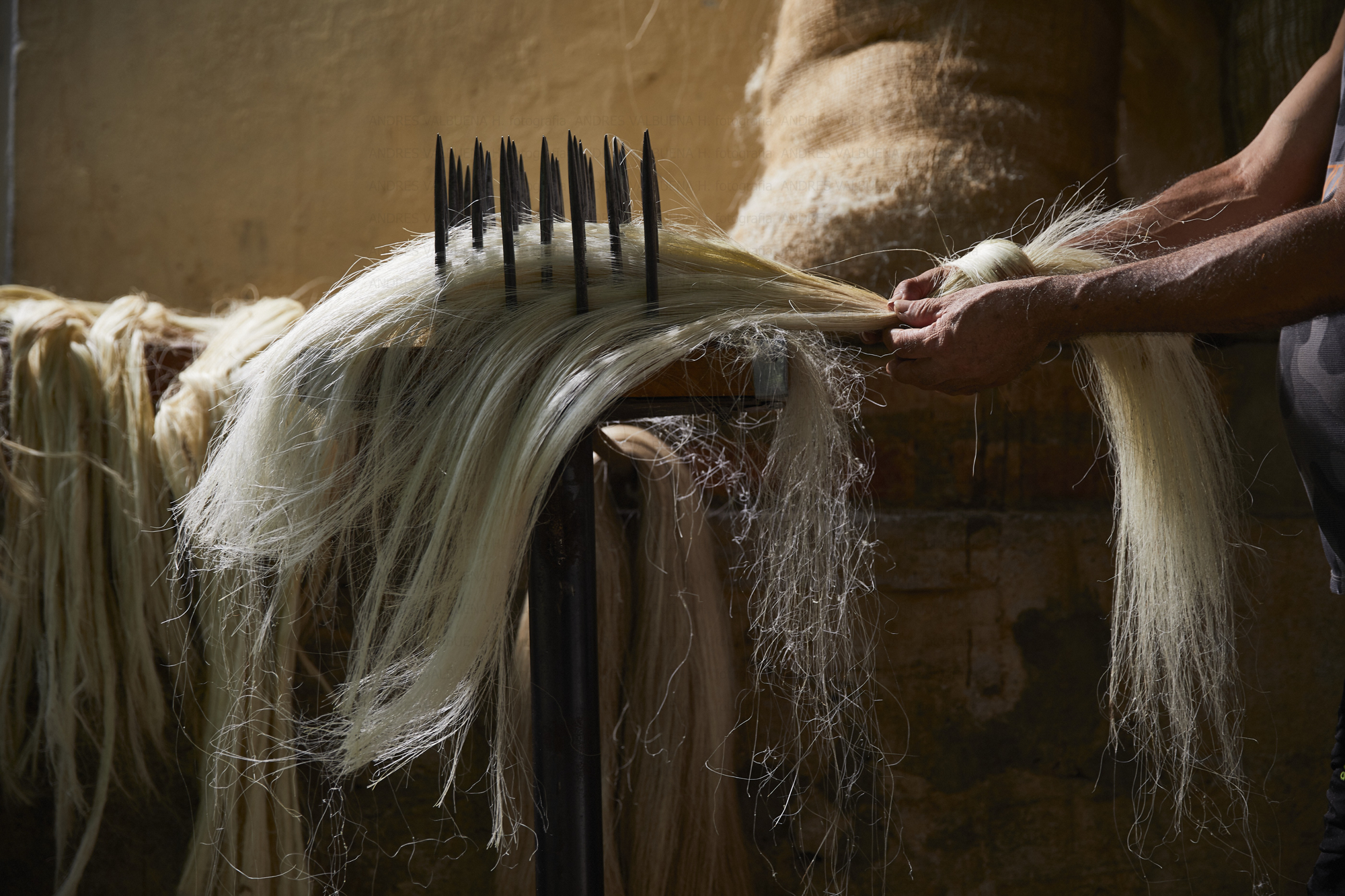
FIQUE
Fique thrives spontaneously across the country, flourishing without the need for additional water, pesticides, or fertilisers. This resilience and low maintenance underscore its environmental benefits. The plant can be harvested year-round, with leaves cut every 3-4 months. A mature fique plant can serve us for up to 30 years, making it a sustainable resource that significantly reduces the need for frequent replanting and minimises our ecological footprint.
Processing & Dyeing
Fique processing stands out for its water efficiency, especially when compared to other fibres like jute or sisal. After harvesting, the fique is carefully defibred and washed, preparing it for the next stages of its transformation. Once prepared, the fibres undergo a crucial drying phase, air-dried for 12-18 hours, ensuring they are ready for the skilled hands of our artisans. Depending on the product, the fibres are dyed using traditional methods.
Community & Craftsmanship
Ames works with two communities that use Fique in their traditional craftsmanship from the Guacamaya and Curtí region: In the heart of Colombia's Boyacá department, the community of Guacamayas continues a rich tradition of craftsmanship that traces back to the indigenous Laches people. Through their crafts, the artisans of Guacamaya not only preserve their cultural heritage but also share it with the world, offering a tangible connection to the history and spirit of their community.
The weaving tradition in Curitíhasroots that stretch back to the era of the Guane indigenous people, long before the town was officially named. These early inhabitants were skilled weavers, creating high-quality textiles that were essential for their community. Their craft has endured through centuries, adapting over time from the traditional cotton weaving to the use of fique. Artisans in Curti engage in various weaving techniques, including vertical and horizontal loom weaving, crochet, and knitting. Their Guane ancestors left a legacy of craftsmanship that became intertwined with the community's identity. This tradition, once threatened by industrial competition and the introduction of synthetic materials, found new life as artisans pivoted to decorative and ornamental uses for fique such as our ames products.
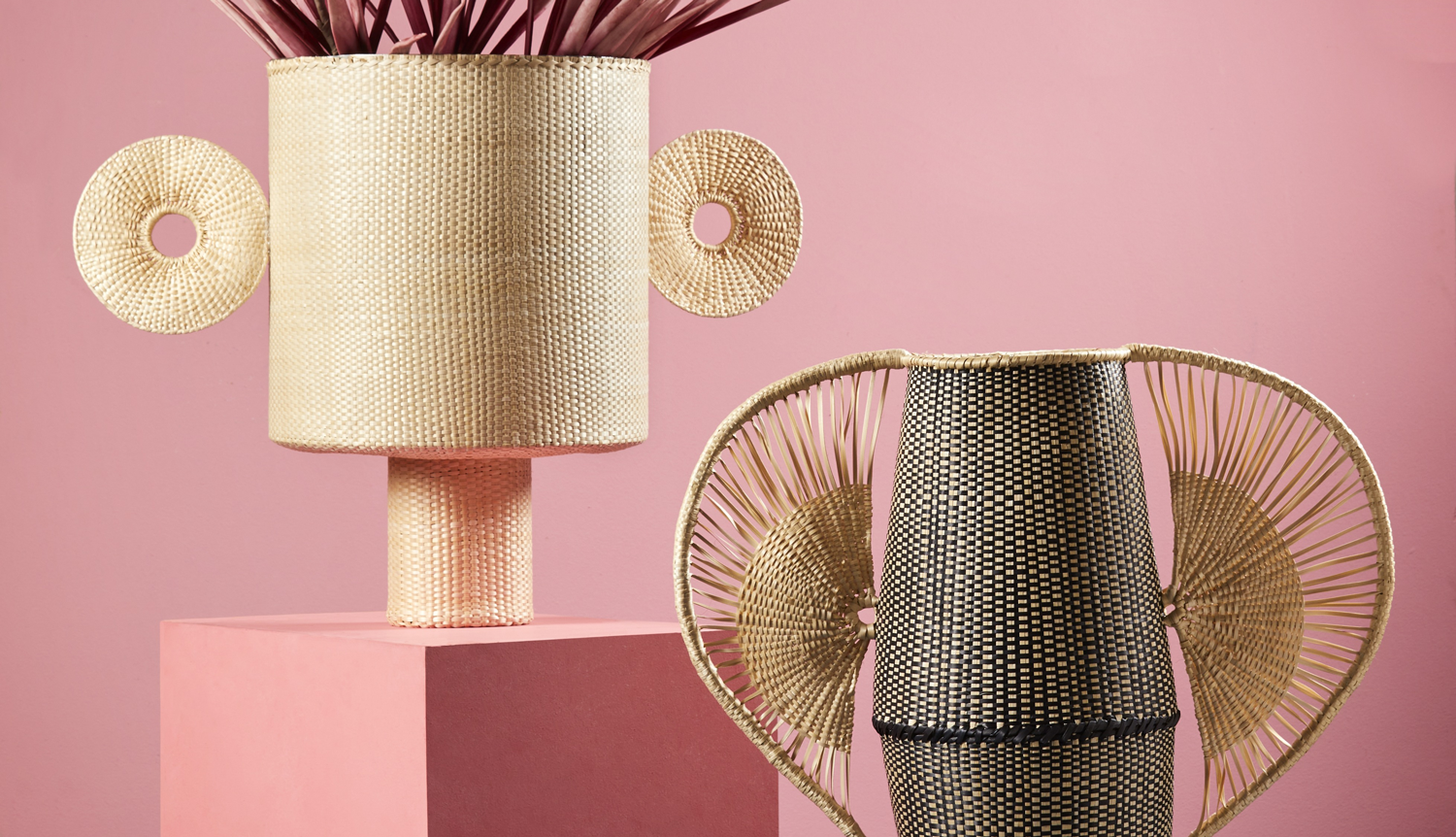
Paja Tetera
Paja Tetera, a plant integral to the production of traditional crafts, thrives in Colombia's Pacific region, particularly in Guapi, Timbiquí, Saija, López, Chocó, and Buenaventura. Its cultivation and harvesting are steeped in the cultural and traditional practices of the local Afro-Colombian and indigenous communities, who have nurtured this tradition through generations for both economic and cultural sustainability. The entire process, from planting to transforming the plant into straw suitable for craft-making, is conducted manually, reflecting the deep connection between the communities and their natural resources.
Processing & Dyeing
The processing of Paja Tetera begins with the removal of the stem from the root and the discarding of the leaves. The stems, once harvested, are peeled with a knife and dried in the shade to prevent dehydration and fiber damage from excessive sunlight. Following drying, the stems are flattened with a bottle to extract the pulp and then cut longitudinally. Using either hands or a knife, the pulp of the teapot ribbon is carefully separated to create ribbons about 5 cm wide and 10 cm long.
The dyeing of Paja Tetera straw involves a meticulous process that starts with the collection of flowers and roots, chosen for their natural pigments. These botanicals are then crushed with a stone and water, mixed in a pot with the fiber, and boiled for half an hour. After boiling, the fiber is washed with water and left to dry at room temperature. The water used in the boiling process is conserved for use in subsequent dyeing sessions.
Community & Craftsmanship
In the department of Cauca, nestled between Puerto Saija and López de Micay, the Guanguí indigenous community, comprised of the Eperara Siapidara ethnic group, has showcased remarkable resilience. Despite facing adversities from conflict in their region, their deep-rooted love for tradition has enabled them to preserve the essence and crafts of their culture. The community faced a significant setback in 2014 when the internal conflict led to the disappearance of "teterals" (the term used by the communities for straw crops), causing displacement and halting their artisanal production. However, demonstrating unwavering determination, the community returned to their homeland in 2015. Upon their return, they not only recommenced the cultivation of food but also of paja tetera, revitalizing the crafting of baskets that embody the identity and strength of their community. These baskets, woven once again by hands deeply connected to their roots, stand as a testament to the community's perseverance and commitment to preserving their heritage.
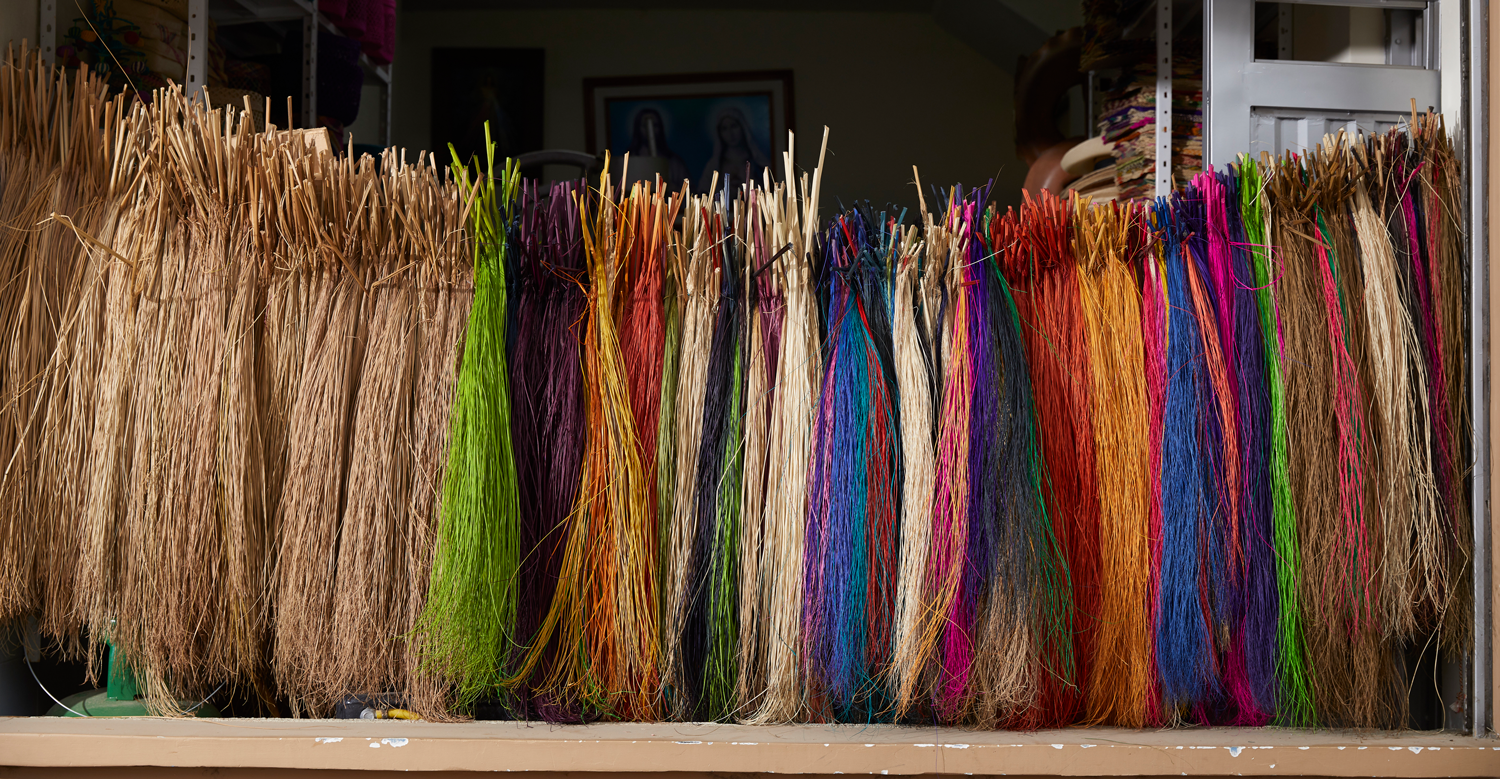
Iraca Palm fibers
Ames primarily sources its Palma de Iraca from Arino. This plant is not particularly water-intensive and adapts well to the natural rainfall in its growing regions. The traditional harvesting method involves carefully collecting the leaves of the plant. This sustainable practice allows the plant to continue growing, while ensuring a steady supply of material for various uses.
Processing & Dyeing
After the leaves are harvested, they need to be cleaned and dried. This drying process can take several days, depending on the climate and method used. Once dried, the leaves are then split into fine strands. These strands may be dyed if color is desired, adding additional time to the process. The entire process from harvest to ready-to-use material is meticulous and time-consuming, reflecting the skill and dedication of the artisans involved.
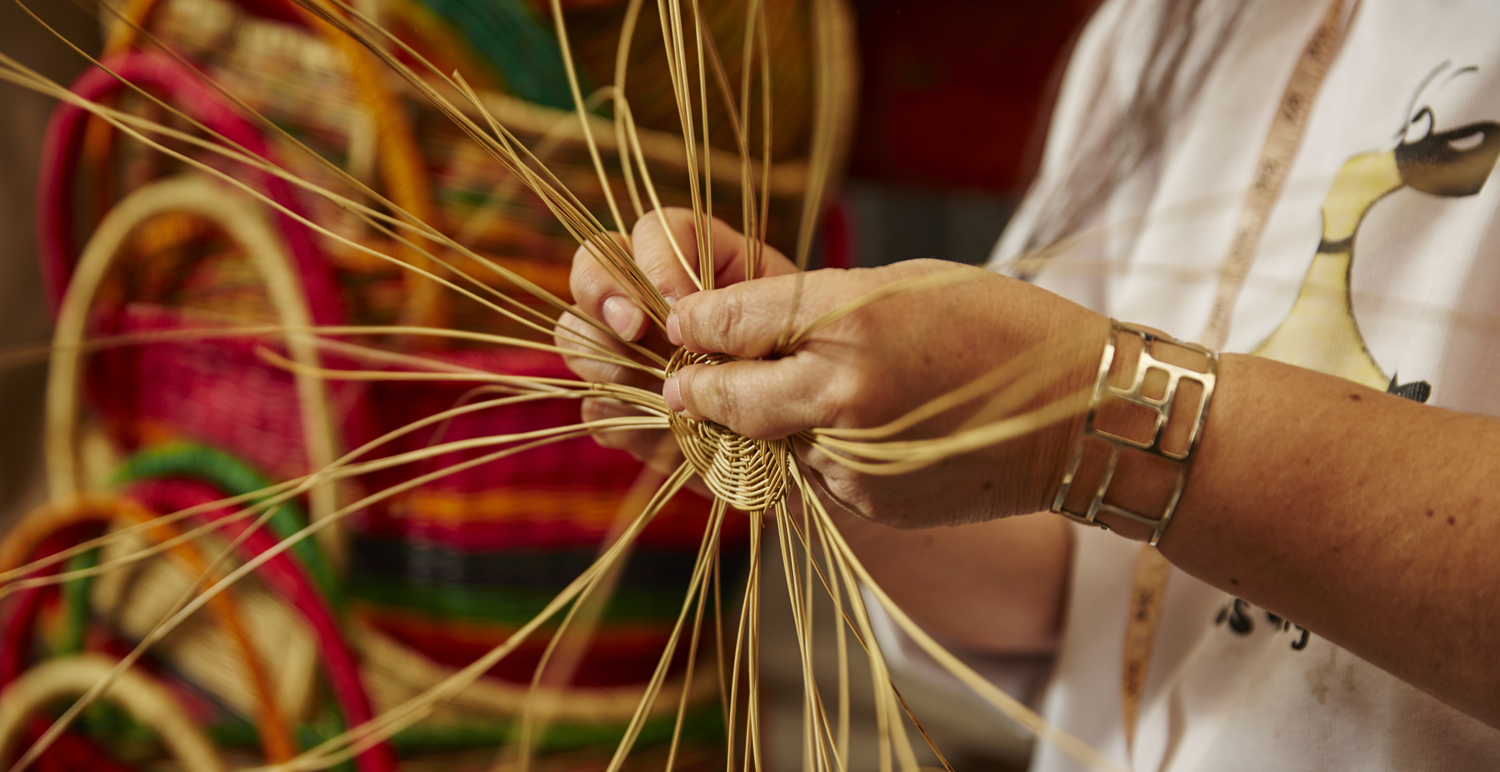
Esparto
Esparto grass is well-adapted to arid and semi-arid climates, commonly found in hot and dry environments. Its resilience to high temperatures and some level of drought makes it suitable for growth in challenging climates. Esparto grow spontaneously and requires no additional water.
Processing & Dyeing
Traditional harvesting of Esparto grass involves using a stick, which could be made of wood or iron, to pull up bunches of leaves. Once harvested, the leaves are not used immediately but are left to dry in the sun until they turn yellowish, a state referred to as raw Esparto.
The craftsperson’s, mainly women, engage in cooking the esparto to soften and whiten it, followed by a dyeing process using vibrant colours to create distinct patterns. Despite the advent of synthetic dyes and changes in production techniques, the essence of esparto weaving remains unchanged, symbolising a harmonious balance between human creativity and nature's bounty.
Community & Craftsmanship
The esparto craft is believed to have originated with the indigenous Muisca communities, although some argue it was introduced by the Spaniards. Regardless of its origins, this craft has become ingrained in the local culture, representing a blend of indigenous techniques and Spanish influences. It holds special significance through its association with the heroic figure of Pedro Pascasio Martínez from Cerinza, who played a crucial role in the Battle of Boyacá, highlighting the craft’s importance in the fabric of history and its contribution to a sense of identity and resilience.
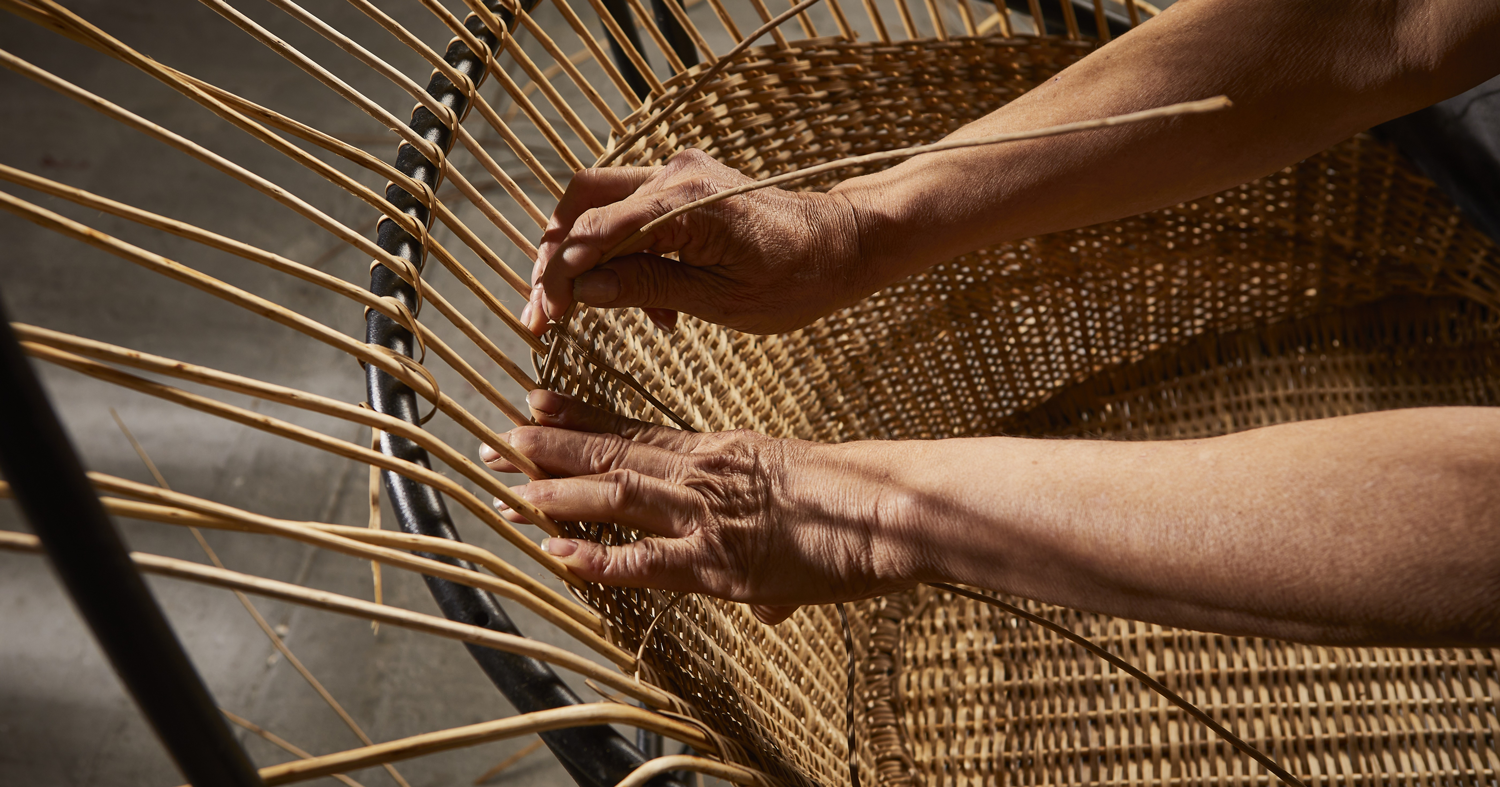
Yare Liana
The Yare Liana, cultivated and harvested by indigenous communities in the Amazon and Putumayo regions of Colombia, represents a remarkable blend of environmental and social sustainability. This vine, growing in spiral patterns around tree trunks in tropical forests below 500 meters, is harvested with a deep understanding and respect for nature. Indigenous communities ensure sustainable harvesting by only taking four out of nine vines from each Yare Liana and by harvesting just 68 out of 153 lianas per hectare monthly. This careful approach helps preserve the forest ecosystem and ensures the vine's availability for future generations.
The environmental sustainability of Yare Liana is further highlighted by its annual harvesting cycle and manual processing methods.
Processing
After harvesting, the lianas are boiled with water and salt, peeled by hand, dried, and then separated into fibers. These steps, all done manually, showcase a low environmental impact and a high level of craftsmanship.
Communities & Craftsmanship
Socially, the harvesting and processing of Yare Liana contribute significantly to the indigenous communities' livelihoods. The knowledge and skills passed down through generations not only help in preserving their cultural heritage but also provide economic benefits. Products made from Yare Liana are unique and precious due to the intricate and labor-intensive process involved in their creation.
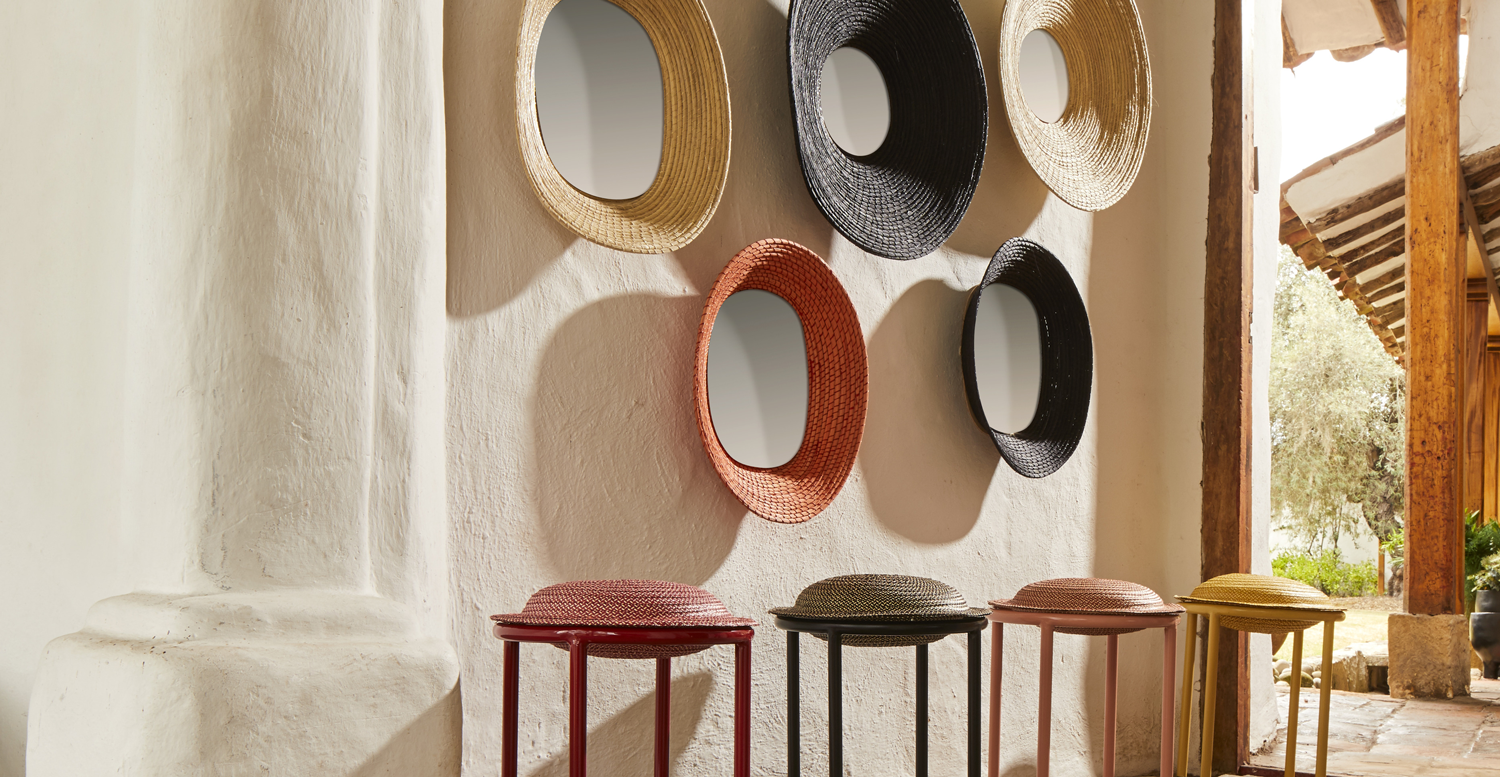
Caña Flecha
Caña Flecha grows in specific environmental conditions but is adapted to the local climate of the Sucre region and does not require additional water.
Processing & Dyeing
The process of making caña flecha crafts begins with the meticulous selection and preparation of the plant's leaves. Artisans scrape the central vein of the leaves to extract the fiber, which is then cleaned, dried, and divided into strips for weaving. The dyeing process involves natural and traditional methods using mud and plant-based dyes to achieve the characteristic black and white colours.
Community & Craftsmanship
The Caña Flecha plant, a significant part of Colombian culture, particularly in the Zenú communities of the Sucre region. It is integrated into the cultural practices of the Zenú, who have been cultivating and using it since the pre-Hispanic period. This craft is a means of cultural communication, embodying the unity of the universe and ancient clan identities through its circular braids and symbolic designs. The craftsmanship technique involves hand-braiding the caña flecha fibers, alternating between thin strips in a process that determines the quality of the final product.
This traditional art form represents more than just the creation of functional items; it encapsulates the Zenú's spiritual beliefs, their connection to nature, and their ancestral heritage. Through each step of the process, from harvesting to the intricate braiding and sewing, the Zenú artisans embed their culture, stories, and life into the crafts, making each piece a vibrant testament to their enduring heritage and the timeless dialogue between man and nature.

Seje
The Seje palm is found in the lush, often flooded rainforests of Latin America, including Colombia's North Coast. This palm, known for its slow growth rate, taking about 75 years to mature, is cultivated in the unique environmental conditions of Córdoba. In crafting our products, Ames uses only the fruits of the Seje palm, never cutting down the entire palm. This practice ensures the sustainability of the Seje palm, allowing it to continue producing fruits throughout the year.
Community & Craftsmanship
Ames relies heavily on the traditional knowledge of our artisan in Córdoba to sustainably harvest the Seje palm. Our artesano, one of only ten individuals in the region with the expertise to properly harvest the Seje, employs time-honored techniques to ensure the palm is harvested without harming the plant or the surrounding ecosystem. Their approach respects the natural cycles of the palm, adhering to traditional beliefs that prohibit harvesting during the full moon, new moon, and winter.
For the creation of our "Mil pesos" lamp, for example, we require around two "racimos" (fruit clusters) from the Seje palm. Our artisano’s deep understanding of the Seje palm's lifecycle and environmental needs ensures that only ripe palms are selected for harvest. This careful selection process is crucial to avoid overexploiting the plant, which is vital for various local wildlife species but also to prevent the deterioration of the palms due to over-concentration in a single area.

Black Clay
The clay is sourced village along the Magdalena River, in the Tolima region. This form of pottery is a result of mixing three types of clay: smooth dark mud, gray sandy clay, and red clay.
Processing
The craftsmanship process in Tolima is a meticulous one, involving the extraction and preparation of clay, followed by traditional shaping techniques, and culminating in the firing and possibly smoking of the ceramic pieces to achieve their iconic colours. The process of making this type of pottery includes extracting clay, drying, crushing, kneading, shaping, drying at room temperature, and firing in wood-fired kilns at relatively low temperatures. The duration of each step can vary, especially the drying and firing stages, which are dependent on factors like weather conditions and the size of the pottery. Typically, the process from extraction to firing can take several days to weeks.
Community & Craftsmanship
The artisans in Tolima have been crafting this unique type of pottery for centuries. Women artisans are at the forefront of this craft, shaping the clay into life, while men contribute by preparing the clay and occasionally crafting pieces themselves.
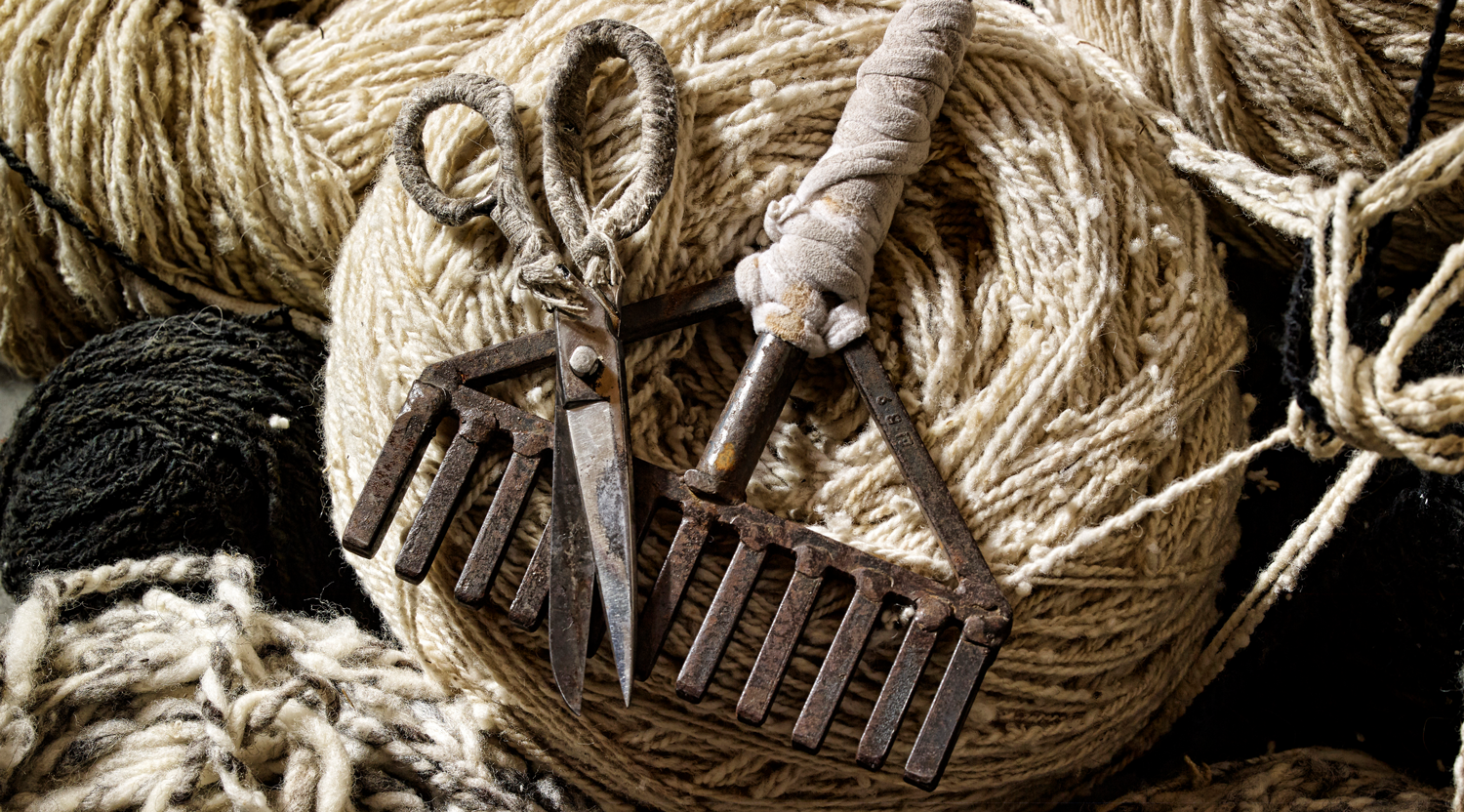
Virgin wool
Our sheep wool, sourced from Boyacá, is obtained through partnerships with local experts like Nubia, who has over 40 years of experience in the industry. She ensures we buy only from small, individual farmers in Colombia, supporting local communities. Our wool is completely biodegradable, and our farmers adhere to humane practices in wool harvesting. Sheep are shorn traditionally, preventing discomfort or health issues that arise from unshorn wool, such as overheating or mobility problems. While more labour and time-intensive, this traditional shearing method not only ensures the well-being of the sheep but also maintains the high quality of the wool used in our products.
Processing & Dyeing
Our artisans engage in a meticulous process that starts with harvesting wool from locally reared sheep and spans shearing, cleaning, and dyeing, skilfully incorporating both natural and industrial dyes to achieve the vibrant colours that define our products.
Community & Craftsmanship
The craft of weaving in Nobsa, a tradition deeply rooted in the pre-Hispanic indigenous communities such as the Muisca and later enriched by the Spanish introduction of sheep and horizontal looms, embodies a profound cultural hybridisation. In the heart of the mountains, weaving has always stood as the paramount craft to withstand the harsh weather conditions. This tradition spans from the pre-Hispanic indigenous communities such as the Muisca to contemporary peasant communities, where the knowledge of spinning, weaving, and creating garments has been essential for survival. Through this profound process of cultural hybridisation originally the Ruana emerged—a product that characterised the independence struggles, the construction of the republic, and today, serves as a national symbol.
The weaving tradition maintains a deep and intrinsic connection to the sacred and everyday life of the Muisca communities, with fabric colours denoting specific uses for various activities. For instance, those attending the Moon temple wore white garments, while sun worshippers in Sogamoso wore red. This craftsmanship was not just a means of clothing, but a way of life deeply intertwined with nature and spirituality, embodying the community's beliefs and connection to the land.
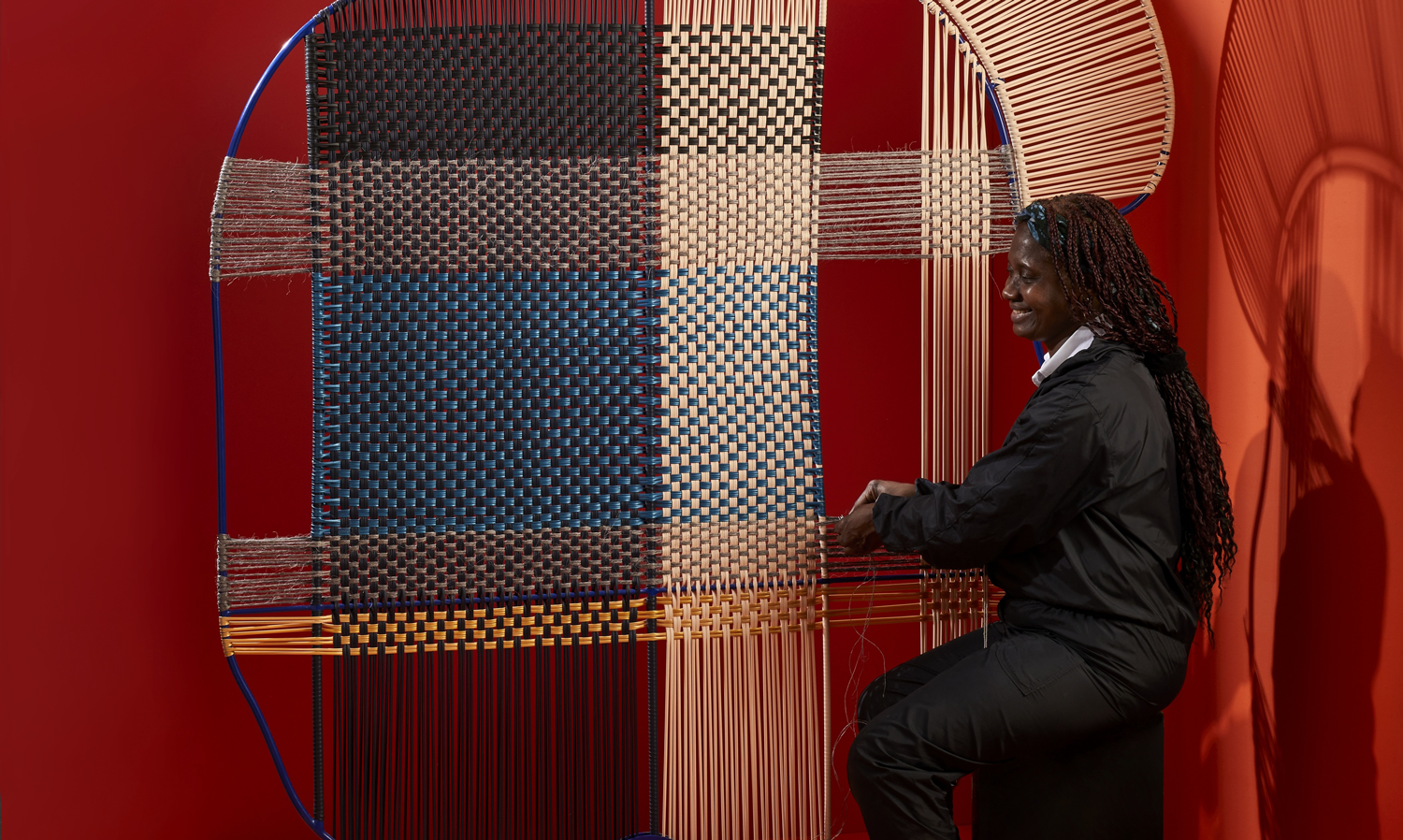
Industrial Materials
At Ames, we consciously select non-natural/industrial materials like PVC, acrylic, and steel for their respective benefits, despite some known sustainability challenges, especially during the production process. Our use of acrylic and PVC in outdoor products hinges on their durability and colorfastness, which are vital for the longevity and quality of the items. This approach to sustainability emphasizes the creation of high-quality, long-lasting products. Additionally, the artisanal communities with whom we collaborate closely have integrated acrylic threads and PVC into their traditional craftsmanship over time. All our PVC is recyclable and wherever possible we make sure to use of recycled materials, which is however only possible for our black PVC products.
The steel we use for several frames is sourced from a family-owned business in Medellin, known for its environmentally responsible practices, including the use of cold-formed steel with minimal waste and 100% recyclability. This long-standing partnership, spanning about 30 years, is underscored by their ISO 14001 and ISO 9001:2008 certifications, ensuring adherence to environmental and quality management standards.
Dyeing Processes
At Ames, our dyeing processes are deeply rooted in traditional practices. We use colors derived from plants, nuts, and other natural sources. For instance, our Caña Flecha products are dyed using leaves from the Caña Flecha plant, rainwater-based mud, dried leaves of the Teeth Cleaner plant, and a special cooking process that imparts a deep black color after five days. In some cases, we opt not to dye materials, embracing the natural colors of fibers like wool, Caña Flecha, and Seje. For more vibrant hues, we use Anilin Indio, a popular choice among artisans. Our approach to dyeing, aligns with our commitment to environmental sustainability and the cultural authenticity of our products.
Packaging & Transportation
At Ames, our commitment to sustainability extends beyond our products to encompass our packaging and transportation methods. We recycle all our packaging materials through our partnership with Nord-Westdeutsche Papierrohstoff Gmbh & Co. KG to minimize our environmental footprint. Furthermore, in our shipping practices, we adhere to a policy of only dispatching fully loaded containers. While this approach might extend delivery times, we trust in our customers’ understanding and support, knowing that this practice significantly reduces our carbon emissions and impact on the planet. Additionally, we continuously strive to localize our sourcing and manufacturing processes. By aiming to find the most efficient transportation routes, we not only support local economies but also reduce transportation emissions. Our efforts to work as close to our artisans’ preferred living and working locations further exemplify our commitment to minimizing our environmental impact while respecting the choices and traditions of our artisan partners.
Connect with us on Instagram
• View on Instagram
• View on Instagram
• View on Instagram
• View on Instagram
• View on Instagram
• View on Instagram



